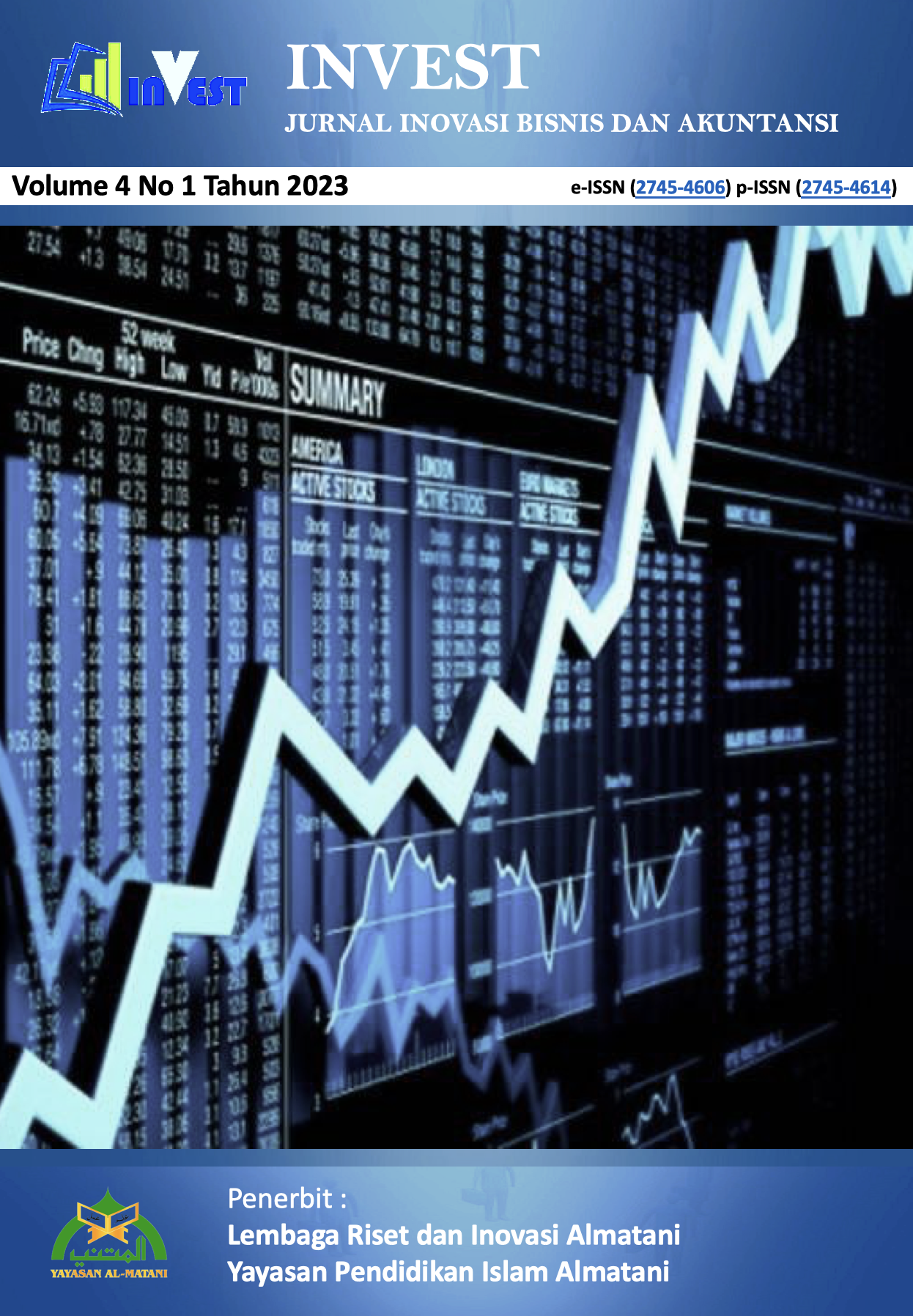Implementation of Local Government Performance Accountability System (SAKIP) in Asmat District Government
DOI:
https://doi.org/10.55583/invest.v4i2.536Keywords:
Performance Accountability, Efficiency, Effectiveness, Leadership EngagementAbstract
The purpose of this study is to know and analyze 1) Knowing and understanding the process and causes of the non-optimal implementation of SAKIP in the Asmat Regency Government, 2) Knowing and understanding what factors affect the optimal implementation of SAKIP in the Asmat Regency Government. 3) Knowing and understanding the implementation of SAKIP in the Asmat Regency Government. The research method uses a qualitative approach, data collection techniques are observation, interviews, and documentation. The results of this research are: 1) The implementation of SAKIP in the Asmat Regency Government is good, which shows that the level of effectiveness and efficiency of budget use is quite good when compared to its performance achievements, 2) Supporting factors: the development of a culture of bureaucratic performance and the implementation of results-oriented governance in the Asmat Regency Government has begun to run well, 3) the leaders are directly involved in providing direction to the lower ranks in the process of planning and evaluating performance and budget, both annual and medium-term.
References
Ahyaruddin, M. & Akbar, R. (2016). The relationship between the use of a performance measurement system, organizational factors, accountability, and the performance of public sector organizations. Journal of Indonesian Economy and Business, 31(1) : 1–22.
Akbar, R., Pilcher, R. & Perrin, B. (2012). Performance measurement in Indonesia: The case of local government. Pacific Accounting Review, 262–291.
Akbar, R., Pilcher, R. & Perrin, B. (2015). Implementing Performance Measurement Systems: Local Government under Pressure. Qualitative Research in Accounting and Management (QRAM). 12(1), 3-33.
Arikunto, S. 2002. Metodologi Penelitian Suatu Pendekatan Proposal. Jakarta : PT. Rineka Cipta
Bogdan dan Taylor, 2010 J. Moleong, Lexy. 2002. Metodologi Penelitian Kualitatif. Bandung: Remadja Karya.
Bovens, M. (2006). Analysing and Assessing Public Accountability: A Conceptual Framework. European Governance Papers (EUROGOV), No. C-06-01.
Braun, V. & Clarke, V. (2006). Using thematic analysis in psychology. Qualitative Research in Psychology. 3: 77– 101.
Cavalluzzo, K. S., & Ittner, C. D. (2004). Implementing Performance Measurement Innovations: Evidence From Government. Accounting, Organizations and Society.
Creswell, J.W. (2014). Penelitian Kualitatif & Desain Riset. 1st ed. Yogyakarta : Pustaka Belajar.
Fachruddin, Imam. (2009). Desain Penelitian. Malang : Universitas Islam Negeri.
Friedman, M. (2005). Trying Hard is Not Good Enough: How to Produce Measurable Improvements for Customers and Communities. Washington D.C.: FSPI.
Gomes, P., Mendes, S. & Carvalho, J. (2008). Use of performance measurement in the public sector: the case of the police service. Implementing Reforms in Public Sector Accounting, 407–426.
Hafiez, S. & Akbar, R. (2013). Hubungan Faktor Internal Institusi dan Implementasi Sistem Akuntabilitas Kinerja Instansi Pemerintah (SAKIP) di Pemerintah Daerah. Jurnal Akuntansi dan Keuangan Indonesia (JAKI).10(2), 184-205.
Haning, Mohammad Thahir. (2018). Reformasi Birokrasi di Indonesia: Tinjauan Dari Perspektif Administrasi Publik Jurnal Analisis Kebijakan dan Informasi Publik. 4(1), Juni 2018
Hennink, M., Hutter, I. & Ajay Bailey. (2012). Qualitatif Research Methods. Washington D.C.: SAGE.
Husein, Umar. (2011). Metode Penelitian Untuk Skripsi dan Tesis Bisnis Edisi 11. Jakarta : PT Raja Grafindo Persada
Instruksi Presiden (Inpres) Nomor 7 Tahun 1999 tentang Jurnal Akuntansi & Manajemen Akmenika Vol. 16 No. 2 Tahun 2019 235 Pelaporan Akuntabilitas Kinerja Instansi Pemerintah.
Jajang Badruzaman dan Irna Chairunnisa. (2011). Pengaruh Implementasi Sistem Akuntabilitas Kinerja Instansi Pemerintah (SAKIP) terhadap Penerapan Good Governance. Jurnal Ilmiah Akuntansi dan Bisnis Universitas Siliwangi. https://scholar.google.co.id/citations ,14 Februari 2019
Jurnali, T. & Nabiha, S. (2015). Performance management system for local government: The Indonesian experience. Global Business Review, 16(3), 351-363.
Kellogg, W. (2004). Logic Model Development Guide. Battle Creek, Michigan.
Longo, Paul J. (2004). Logic Models in Evaluation Design.” Ohio Program Evaluator Group, Evaluation Basic Workshop, November 15&16, 2004, 2011. An Approach to performance Measurement: Using the performance blueprint and Related Ongoing performance Measurement & Management (OPM&M) Techniques). Lates Version.http://paullongo.org/pro ducts.html.
Mahsun, M. (2013). Pengukuran Kinerja Sektor Publik. Yogyakarta: BPFE. [19]
Mardiasmo. (2009). Akuntansi Sektor Publik. Yogyakarta: ANDI.
Nasution, S. Metode Research (Penelitian Ilmiah), Jakarta: BUMI AKSARA
Ruscitasari, Zulfatun. (2019) dalam Implementasi Sistem Akuntabilitas Kinerja Satuan Kerja Perangkat Daerah
Sofyani, H., Akbar, R. & R.D. Ferrer. (2018). 20 Years of Performance Measurement System (PMS) Implementation in Indonesian Local Governments: Why is Their Performance Still Poor?. Asian Journal of Business and Accounting (AJBA), 11(1), 151-183.
Speklé, R. F., & Verbeeten Frank H.M., (2009). The Use of Performance Measurement Systems in The Public Sector: Jurnal Akuntansi & Manajemen Akmenika. 16(2) Tahun 2019 236 Effects on Performance. Nyenrode Research & Innovation Institute (NRI) Research Paper, No. 09-08 (JRAK). 3(2), 447- 463.
Syachbrani, W. & Akbar, R. (2013). Faktor-faktor Teknis dan Keorganisasian yang Mempengaruhi Pengembangan Sistem Pengukuran Kinerja Pemerintah Daerah. Jurnal Reviu Akuntansi.
Wijaya, A. C. H., & Akbar, R. (2013). The Influence of Information, Organizational Objectives and Targets, and External Pressure towards the Adoption of Performance Measurement System in Public Sector. Journal of Indonesian Economy and Business (JIEB), 28(1), 62-83
Yusrianti, Hasni & Safitri, Rika Henda (2015). Implementasi Sistem Akuntabilitas Kinerja Instansi Pemerintah (SAKIP) Pada Satuan Kerja Perangkat Daerah (SKPD) Di Lingkungan Pemerintah Kota Palembang.
Downloads
Published
How to Cite
Issue
Section
License
Copyright (c) 2023 Raka Pamungkas, Marja Sinurat, Dyah Poespita Ernawati

This work is licensed under a Creative Commons Attribution-NonCommercial 4.0 International License.










